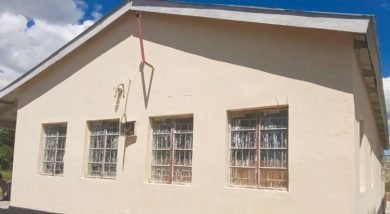Price of pay policy delays
M
alawi Government is indecisive on reversing a trend of growing remuneration disparities for public officers on the same grade with differences exceeding K1 million in some cases.
The Nation findings established that the disparities have persisted since 1993 because government is sitting on several recommendations to harmonise remuneration in the public service.
Based on programme-based budget document Number Five and interviews, The Nation found that differences in remuneration in the public service are more glaring from Grade A designated to the Secretary to the President and Cabinet (SPC) and the Chief Justice.
In the 2023/24 fiscal year, the SPC’s monthly salary is projected at K4.4 million, about K400 000 more than that of the Chief Justice.
Grade B, where director general of National Intelligence Service (NIS) gets K2.7 million against K2.5 million for the Inspector General of Police and the State Residences chief of staff at K2.6 million, is not spared either.
The Clerk of Parliament (CoP) is on Grade C alongside Principal Secretaries (PSs), but gets a better package than the other controlling officers, according to the findings. The budget documents show that the CoP gets K4.5 million a month, about K1.7 million more than the Judiciary’s controlling officer, the Registrar, receives on the same grade.

The CoP also surpasses the PS for Justice on the same grade, who receives about K3.5 million. The grade also has the Director of Public Prosecutions (DPP) who is allocated K1.7 million while controlling officers for the Prisons Service and Department of Immigration have an equal allocation of K1.8 million.
From the documents, the CoP’s estimated pay is higher than the SPC and Chief Justice who are two grades up.
However, the two have more benefits which include an allocation of 2 500 litres of fuel per month against the CoP’s 500 litres.
Among six governance institutions we have looked at, the Financial Intelligence Authority (FIA) DG receives K3.9 million while the head of the Office of Public Declaration of Assets has the lowest at K2.1 million. The Ombudsman trails the FIA DG at K3.2 million followed by Independent Complaints Commission (ICC) chief at K3.1 million, Anti-Corruption Bureau DG gets K2.9 million and Law Commissioner is at K2.2 million.
Civil Service Trade Union (CSTU) secretary general Madalitso Njolomole said the disparities could be addressed by establishing a single body responsible for determining salaries in the public service.
He said the CSTU has been pushing for harmonisation of remuneration because it holds the view that some institutions have better s for no good reason.
Said Njolomole: “There is no point for these differences in institutions that wholly depend on government funding. The same qualifications and experience should attract same pay regardless of placement.”
The disparities are also observed in State-owned enterprises (SOEs) such that the Department of Statutory Corporations has submitted a report to the Office of the President and Cabinet (OPC) recommending a review of remuneration to be in line with performance of institutions and the state of the economy.
In an interview, Comptroller of Statutory Corporations Peter Simbani said their assessment shows that even loss-posting enterprises enjoy high remuneration which he said does not make sense.
He said: “We noticed that for SOEs of the same category, a CEO in one gets K9 million per month and in another just K2 million.
“Boards of these institutions raise salaries without taking into consideration the performance of the institution and the state of the economy. We need to a find a way that can ensure sanity on this.”
The department’s report follows a directive President Lazarus Chakwera issued on May 31 last year when he announced public expenditure control measures.
The President stopped the award of new contracts in parastatals until after the Comptroller for Statutory Corporations has done a review of the performance of the SOEs.
The Nation’s analysis of four public universities established that there is a huge difference on the estimated pay for controlling officers, notably vice-chancellors (VC), from one university to another.
The documents show that Malawi University of Science and Technology VC gets almost two times the K7.8 million paid to Mzuzu University VC while the University of Malawi VC receives K7.5 million. Kamuzu College of Health Sciences VC is second from Must with K11.5 million.
Comparatively, we looked at 10 subvented regulatory bodies where huge differences were also observed with some DGs getting an equivalent of 25 percent their colleagues in other institutions are getting.
In an interview on the developments, corporate governance expert Professor James Kamwachale Khomba backed the salary disparities, saying harmonisation across the public service would be problematic because different professions have different values on the market.
While agreeing that this may easily work in the civil service, he said for parastatals that generate income, performance and skills should also matter in the remuneration consideration.
In 1993, with funding from the World Bank, government instituted a study titled Malawi Civil Service Pay and Employment that was released on December 6, 1993. Among the major recommendations of the study was the harmonisation of remuneration in the public service.
Another study was also conducted in 2003, Medium Term Pay Policy which recommended establishment of an institution responsible for remuneration in the public service.





